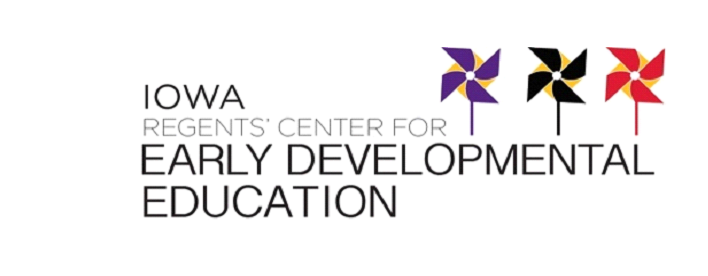Ramps and Pathways is a fully integrative STEM activity that addresses PK standards for Science (Taken from Iowa Early Learning Standards)
12.4 Scientific Reasoning
Standard: Children observe, describe, and predict the world around them
Benchmark: The child
- notices, describes, and makes comparisons in the natural and designed world
- uses scientific tools such as balance scales, measuring tapes, hand lenses, and microscopes to extend the senses and aid understanding
- makes close observations of living and nonliving things
- organizes, classifies, and records information drawn from observations
- uses data from observation to describe the world, including patterns, cause and effect relationships, and predictions
12.5 Scientific Investigations and Problem Solving
Standard: Children plan and carry out investigations to answer questions and test solutions to problems
Benchmark: The child
- asks questions of the natural and designed world that can be answered through direct investigation
- plans and carries out investigations
- makes close observations to determine cause of problems
- uses evidence collected during investigations to evaluate results
- communicates results of investigations to others
Ramps and Pathways is a fully integrative STEM activity that addresses Literacy standards for PK (Taken from Iowa Early Learning Standards)
11.1 Language Understanding and Use
Standard: Children understand and use communication and language for a variety of purposes
Benchmarks: The child
- demonstrates a steady increase in listening (receptive language) and speaking(expressive language) vocabulary
- initiates, listens, and responds in relationship to the topics of conversations with peers and adults
- speaks in phrases and sentences of increasing length and complexity
- follows oral directions that involve several actions
- asks and answers a variety of questions
- demonstrates knowledge of the rules of conversations such as taking turns while speaking
The child, who is an English language learner, also:
- uses their home language to communicate with people who speak the same home language
- demonstrates receptive (listening) English language skills to be able to comprehend the English language
- demonstrates expressive (speaking) English language skills to build speaking capabilities in English
- demonstrates engagement in English literacy activities to be able to understand and respond to books, storytelling, and songs presented in English
11.3 Early Writing
Standard: Children engage in early writing experiences
Benchmarks: The child
- attempts to communicate with others using scribbles, shapes, pictures, and/or letters in writing
- experiments with a variety of writing tools such as pencils, crayons, brushes, and chalk
- uses expressive (speaking) language to share intended meaning of drawings and writing
- starts to demonstrate interest in learning to write letters, especially the letters in his/her name
Ramps and Pathways is a fully integrative STEM activity that addresses Mathematical standards for PK (Taken from Iowa Early Learning Standards)
12.1 Comparison and Number
Standard: Children understand counting, ways of representing numbers, and relationships between quantities and numerals
Benchmarks: The child
- counts to five
- counts objects, pointing to each one correctly while counting
- uses language such as more or less to compare quantities
- begins to recognize small quantities without counting them
- starts recognizing and naming of numbers
12.2 Patterns
Standard: Children understand patterns
Benchmarks: The child
- recognizes and creates patterns moving from simple to complex
- predicts what comes next in a pattern
12.3 Shapes and Spatial Reasoning
Standard: Children understand shapes and spatial relationships
Benchmarks: The child
- demonstrates understanding of spatial words such as up, down, over, under, top, bottom, inside, outside, in front, and behind
- identifies 2- and 3- dimensional shapes
- notices characteristics, similarities, and differences among shapes, such as corners, points, edges, and sides
- notices how shapes fit together and can be taken apart to form other shapes
12.6 Measurement
Standard: Children understand comparisons and measurement
Benchmarks: The child
- sorts, classifies, and puts objects in series, using a variety of properties
- makes comparisons between several objects based on one or more attributes, such as length, height, weight, and area, using words such as taller, shorter, longer, bigger, smaller, heavier, lighter, full, empty, length, height, and weight
- measures objects using non-standard units of measurement, such as using blocks to determine how tall a child is
- develops an awareness of simple time concepts within his/her daily life such as yesterday, today, tomorrow, morning, afternoon, and night
Ramps and Pathways is a fully integrative STEM activity that addresses Mathematical standards for PK (Taken from Iowa Early Learning Standards)
Mathematical Practices
9.1 Curiosity and Initiative
Standard: Children express curiosity, interest, and initiative in exploring the environment, engaging in experiences, and learning new skills
Benchmarks: The child
- deliberately chooses to explore a variety of materials and experiences,seeking out new challenges
- participates in experiences with eagerness, flexibility, imagination, independence, and inventiveness
- asks questions about a variety of topics
- repeats skills and experiences to build competence and support the exploration of new ideas
9.2 Engagement and Persistence
Standard: Children purposefully choose and persist in experiences and play
Benchmarks: The child
- persists in and completes a variety of both adult-directed and child-initiated tasks, projects, and experiences of increasing degrees of difficulty
- maintains concentration on a task despite distractions and interruptions
- sets goals and follows a plan in order to complete a task
- chooses to participate in play and learning experiences
9.3 Reasoning and Problem Solving
Standard: Children demonstrate strategies for reasoning and problem solving
Benchmarks: The child
- shows interest in and finds a variety of solutions to questions, tasks, or problems
- recognizes and solves problems through active exploration, including trial and error, and through interactions and discussions with peers and adults
- shares ideas or makes suggestions of how to solve a problem presented by another person

